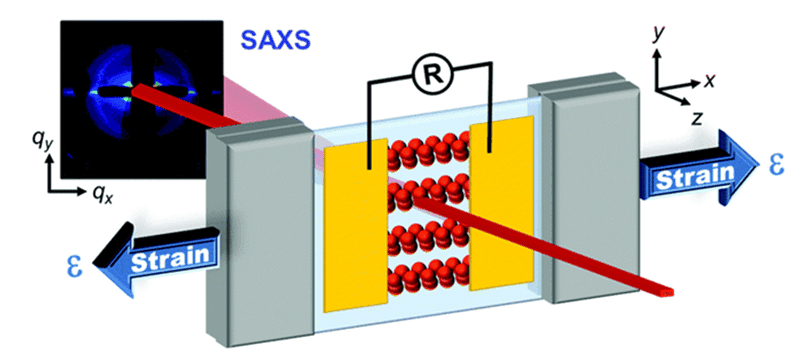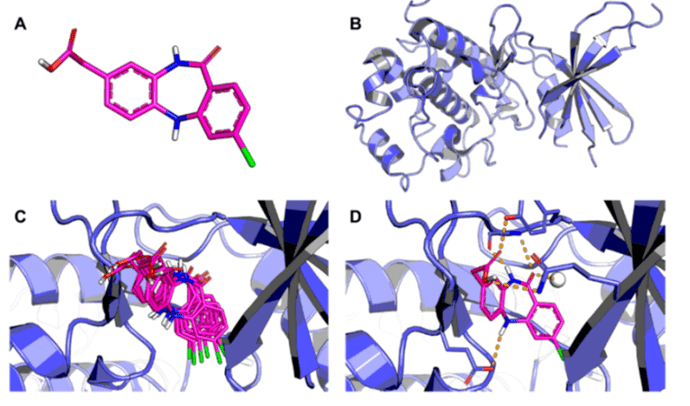Creative Biolabs is an undoubted pioneer in the market of bispecific antibodies (BsAbs) development. Based on the comprehensive antibody analysis platform, we offer high quality molecular structure analysis for BsAbs. With the latest instruments and professional staff, we are dedicated to providing first-class molecular structure analysis services to meet your goal of BsAbs development in a time-saving manner. Various techniques for the molecular structure determination are available, including Nuclear Magnetic Resonance (NMR) Spectroscopy, Small-angle X-ray Scattering, and Molecular Docking Analysis.
Nuclear Magnetic Resonance (NMR) Spectroscopy
NMR spectroscopy is a powerful and theoretically complex analytical tool. This technique takes advantage of the magnetic properties of certain atomic nuclei, and determines the physical and chemical properties of atoms or the molecules they contain. NMR is applied in quality control and to measure the content and purity of a sample, as well as its molecular structure. It can quantitatively analyze mixtures containing known compounds, and directly infer the basic structure of unknown compounds as well. Moreover, it enables us to study the molecular conformation in solution and to determine the physical properties at the molecular level, such as solubility, phase changes, and conformational exchange.
Small-angle X-ray Scattering (SAXS)
SAXS is a useful technique to study the sizes of a variety of particles, from small peptides to large macromolecular machineries with molecular weight ranging from about 5 kDa up to 100 MDa. It can provide valuable information about the low resolution structural characteristics and in some cases a model of the protein shape. One amazing advantage of SAXS is that it gives immediate feedback regarding whether the protein is folded or not, and whether the protein is monodispersed or aggregated in solution. Due to the brilliant synchrotron sources, robotic sample changers and diverse methods to reconstruct 3D models, SAXS has become an essential tool to rapidly and comprehensively characterize macromolecules.

Figure 1. The schematic diagram of Small-angle X-ray Scattering (SAXS).
Molecular Docking Analysis
Docking is an approach to predict the preferred orientation of one molecule to another when bound to each other to produce a stable complex. Information of the preferred orientation in turn can be applied to predict the strength of association or binding affinity between the two molecules. On account of the capacity to predict the binding-conformation of small molecule ligands to the appropriate target binding site, molecular docking has become one of the most widely used approach in antibody structure analysis. We integrate a variety of computational chemistry softwares to correctly calculate the parameters that are required at different steps of the docking procedure, for example, AutoDock, UCSF DOCK, RosettaDock, 3D-Dock Suit, and others.

Figure 2. An outline of the molecular docking process. (A) shows a three-dimensional structure of the ligand; (B) shows the three-dimensional structure of the receptor; (C) shows that the ligand is docked into the binding cavity of the receptor with the putative conformations explored; (D) shows the most likely binding conformation (Ferreira, L. G., 2015).
With our well-established BsAbs analysis platform, the experienced scientists at Creative Biolabs are dedicated to helping you develop BsAbs using a full variety of techniques. Our high quality molecular structure analysis services will greatly contribute to the successes of your projects. Creative Biolabs also provides other various services regarding BsAbs development. Please feel free to contact us for more information and a detailed quote.
Reference
1. Ferreira, Leonardo G., et al. "Molecular docking and structure-based drug design strategies." Molecules 20.7 (2015): 13384-13421. Distributed under open access license CC BY 4.0, without modification.
Our products and services are for research use only, and not for use in diagnostic or therapeutic procedures.
Welcome! For price inquiries, we will get back to you as soon as possible.
To order, please email
INQUIRY









